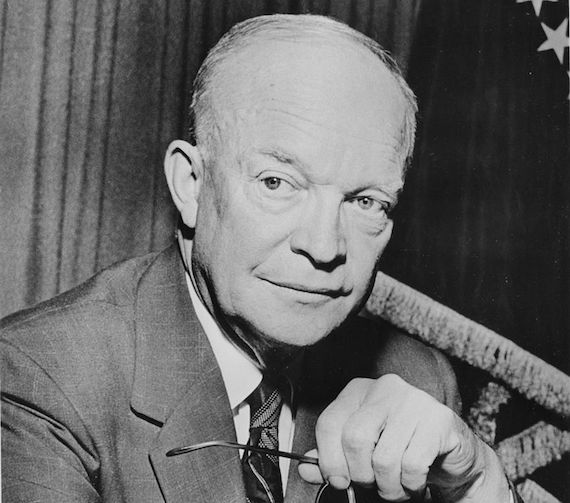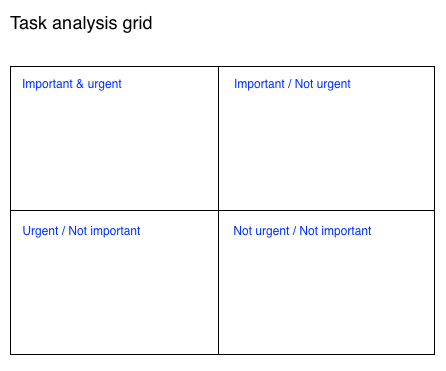By Martin Vogel

It’s a given in most management roles that there is more work to be done than there is time available to do it. But it’s with increasing frequency that clients are talking to me about their difficulties in deciding what to prioritise in their unrealistically demanding workloads. In such conversations, I reach for the urgent and important matrix. This is an approach to time management popularised by Stephen Covey in The 7 Habits of Highly Effective People and inspired by the former US President, Dwight Eisenhower.
In a lecture in 1954, Eisenhower said, “I have two kinds of problems, the urgent and the important. The urgent are not important, and the important are never urgent.”
The urgent and important matrix presents this insight in a two-by-two grid. Although I generally advocate David Allen’s Getting Things Done as the gold standard of self-organisation, I sometimes suggest the urgent and important matrix to people who are struggling to find their focus. Adopted as a daily discipline, it offers a simple means of triage of a demanding inbox. The strength of the model is that it reminds you to connect with what’s important and not simply be driven by what seems to be urgent.

And that’s the secret to using this approach effectively. On the face of it, it would seem intuitive that, once you’ve allocated your tasks to the different boxes on the matrix, you strike off anything that’s not urgent and not important and prioritise everything else in this order: (1) important and urgent; (2) important and not urgent; (3) urgent and not important.
Not so fast! Certainly, it’s a no brainer to recognise that if anything on your list is neither important nor urgent, then you probably shouldn’t be contemplating it. But, as for the rest, it’s necessary to ask: “Urgent to whom? Important for whom?” If you are categorising items as urgent and not important, these are also probably unworthy of your attention.
If you refer back to Eisenhower’s quote, it’s striking that he didn’t appear to be an enthusiast of the matrix approach. For Eisenhower, it was a binary choice: focus on the important or allow himself to be distracted by the urgent. But Eisenhower was president in a pre-Trumpian era when we still thought of the US President as the leader of the free world – i.e. the leader of leaders. Two things flow from this: he and only he was ultimately responsible for where he put his focus; and he had a raft of staff to whom he could delegate the urgent while he focussed on the important.
For the rest of us, assessing what is urgent and important in our workload is contingent not just on our own judgment but that of others – notably: (1) our bosses; (2) our customers; and (3) our peers. Even so, Eisenhower’s insight that the urgent crowds out the important still applies. Another well known American, the investor Warren Buffett, advocated that if you have 25 important goals in life, you should focus on only the top five. Compared to your top five, nothing else is important enough to warrant your attention. If you let others’ sense of urgency distract you, you’ll never gain traction with your objectives. Nor will you if you kid yourself that processing your emails and checking your Twitter feeds is a sufficiently productive use of your day.
Life is unpredictable and working environments demanding. So it’s prudent to budget some of your time each day to resolving things that are important and urgent. But the main insight of the urgent and important matrix is that you should be spending most of your time progressing objectives that are important to your success, and before they reach the status of becoming urgent. This is where your most creative and productive work gets done.
Download our urgent and important worksheet.
Image courtesy Wikimedia.
